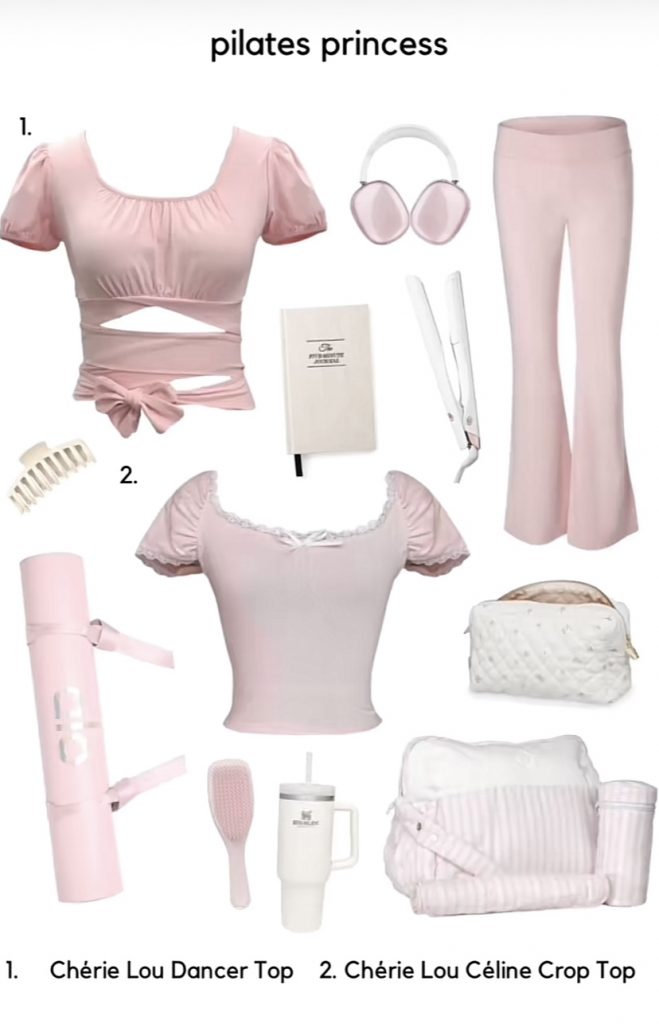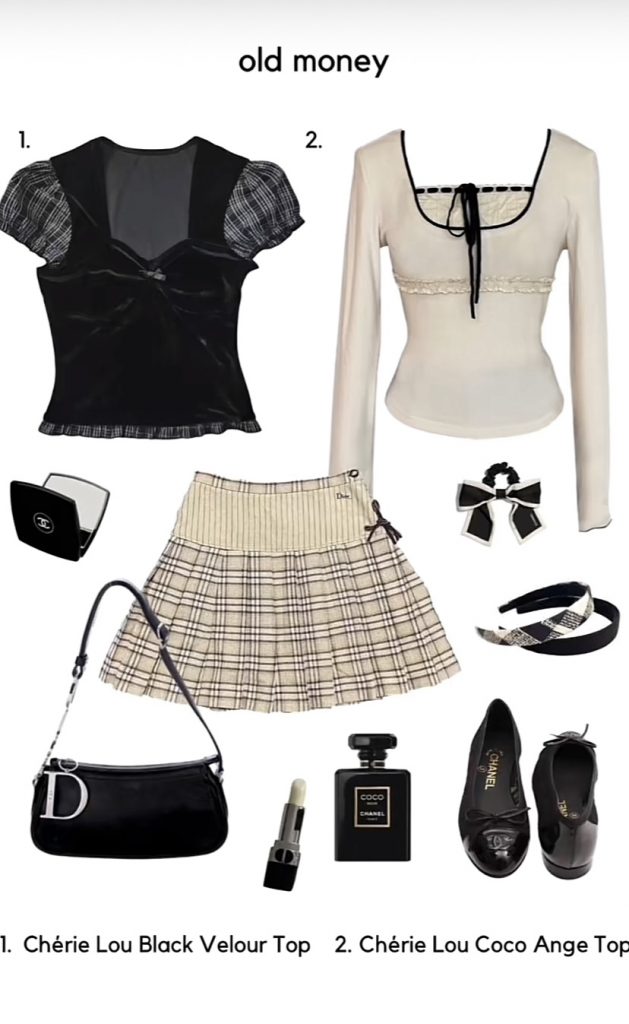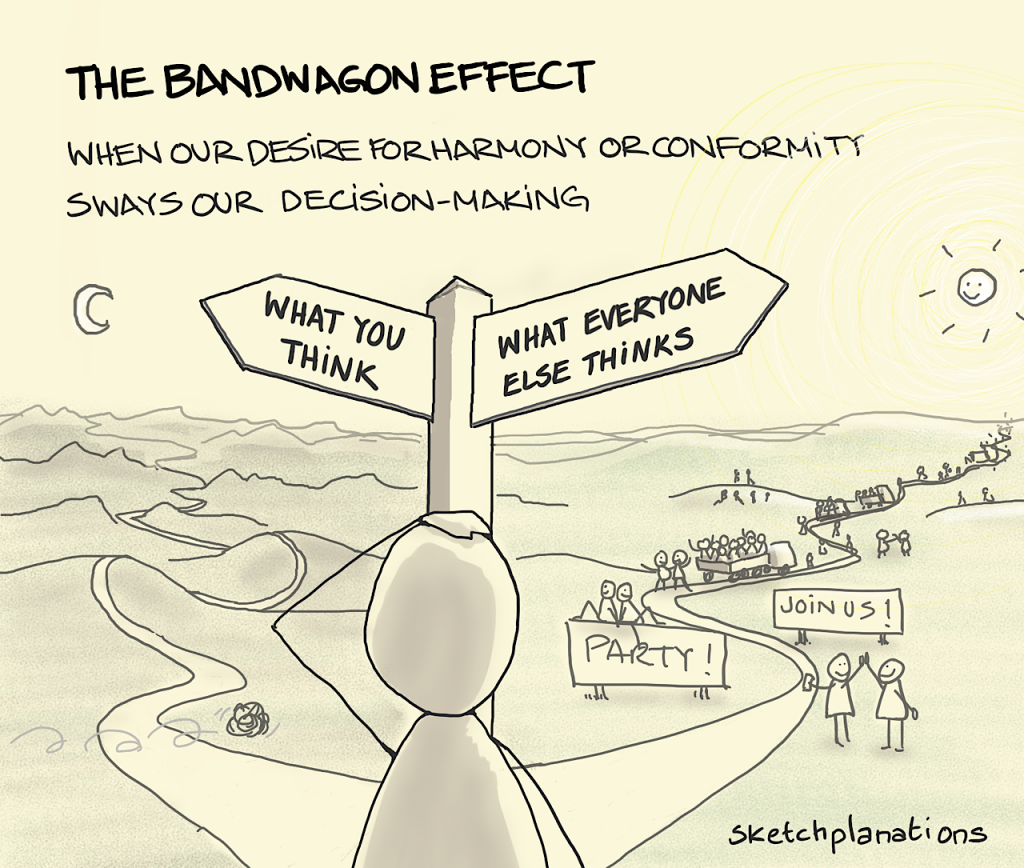In today’s digital world, aesthetics and certain ways to “be”, to present oneself, has become a huge part of social media. Aesthetics are more than just a style, whether it be creating countless perfectly arranged Pinterest boards, carefully crafting your feed on Instagram or your Spotify playlists to match a vibe or a feeling—they’re all forms of self expression. The digital world offers people a space to express their personal tastes and create a visual identity based on how they want to be perceived.
While the rise of internet-curated aesthetics offer people a chance to express themselves creatively, many people agree that this search for identity through social media results in conforming to trends instead of genuine self expression. Ironically, the more people strive to express their individuality, the more they end up blending in with everyone else in said “aesthetic” style.
Downtown girl, clean girl, coquette, dark academia, cottagecore, pilates princes — and so much more. If you want to fit in a certain aesthetic, all you have to do is buy the necessary clothes, do the necessary makeup, adapt the lifestyle that the people in this community present through social media. If you’re a “clean girl”, you’ll be in the more minimalistic side and do self-care as a way to fit in the aesthetic, as that is what all the influencers post. A “pilates princess” will work out in baby pink clothes, and share healthy smoothie recipes, bring their Stanley water bottle everywhere. Whereas a “downtown girl” will be a little messier, but still remain stylish and appear more as grunge. To sum up shortly, these aesthetics are more than just how you look on social media but also require you to make changes in your life style, if you really want to fit in. While this can have a positive effect on people if you implement the healthy parts into your life, it can also lead people to prioritize what’s trending over what you really like and want. This constant curation of an idealized self ends up following the pursuit of online validation and “fitting in” rather than authentic self expression, due to the subtle but very real pressure to conform to trends, that change in the blink of an eye.



From another perspective, conforming to these trends also almost always mean giving into consumerism. Consumers feel the need to update or change their “style” constantly, which means updating their clothes, their makeup, or whatever it is they need to buy to fit in. The fast fashion industry works rapidly, replicating these styles and offering the people what they want in affordable prices, which results in significant damage on the environment and raises concerns about sustainability.
But why is it that most people feel this need to conform to the trends, even when they’re not aware? What is with all the hype about materialistic items and clothing, why do they mean so much? It’s very simple, we just don’t want to be left out. By keeping up with trends and aesthetics, a sense of community is created within a group of people. In psychology, the need to follow trends is explained by the “Bandwagon Effect” which is a phenomenon that occurs when people adopt certain behaviors, styles, or attitudes simply because others are doing so.1 What is in style or currently trending is determined based on what the bigger proportion of people are doing, wearing, using said thing. When the amount of people doing the same thing increase, so does the number of people who “hop on the bandwagon” with them. Another cognitive bias is the “reverse bandwagon effect” or “snob effect” where the same thing that makes people conform to trends, makes some people avoid doing or buying certain things, just because that’s what everyone else is doing.2

While it may seem like a conscious choice to just do what everyone else is doing to fit in, it should be noted that this tendency generally comes from an underlying and unavoidable biological need for acceptance that is deeply rooted in human nature. Essentially, we are social creatures who search for belonging and acceptance, and some people satisfy this craving by adapting the common and popular behaviors, beliefs and habits. Trends give people this chance to relate to others quite easily. Therefore, discouraging the behavior to follow trends won’t ever lead anywhere as they will always come and go and be part of our lives. Instead, recognizing and embracing our own personal tastes and beliefs, while still using social media as a way to express ourselves in the style or aesthetic we truly like, will create a better balance.
1 Áron Kiss and Gábor Simonovits, “Identifying the Bandwagon Effect in Two-Round Elections,” Public Choice 160, no. 3/4 (2014): 327–344, https://doi.org/10.1007/s11127-013-0146-y.
2 “The Bandwagon Effect: Why People Tend to Follow the Crowd,” Effectiviology, https://effectiviology.com/bandwagon/




I think that’s an interesting point of view. I’m starting to think about my own style of dressing and what I really want and what I’ve been brainwashed by the internet. I think it seems like a hard distinction, especially as someone who is deeply connected to the internet. But even without the internet, it seems like our aesthetics are dominated by the mainstream and big corporations. It reminds me of the film The Devil Wears Prada, with that classic blue sweater “theory” from the heroine’s boss – that the purchase of a blue sweater is not a matter of the consumer’s own will, but rather a fashion industry-driven filter.